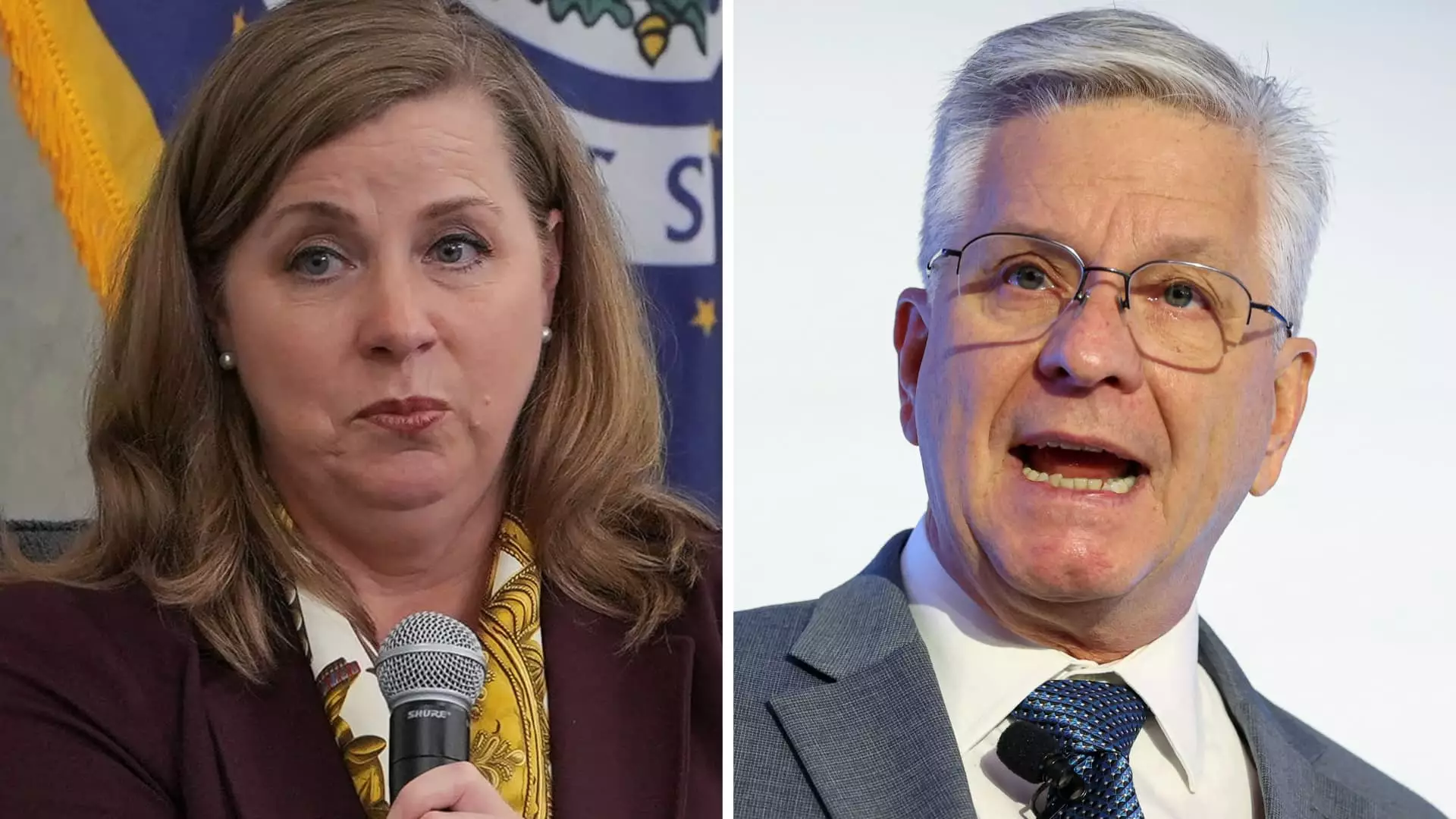The Federal Reserve’s current stance of holding interest rates steady is a policy choice fraught with risk and misjudgment. While the Fed claims this pause allows for data-driven decision-making, it ultimately reveals a cautiousness that borders on complacency. This hesitation, especially amidst signs of labor market vulnerabilities and inflationary pressures, could hinder the necessary adjustments needed to maintain economic stability. My analysis suggests that the central bank’s reluctance to act decisively is not only a missed opportunity but potentially a dangerous oversight in an increasingly uncertain economic environment.
In the past, central banks that hesitated to tighten or loosen monetary policy often found themselves behind the curve. Today, the Fed’s decision not to lower interest rates as inflation remains elevated and labor market indicators weaken reflects an overly cautious approach. The recent dissent from Fed officials Christopher Waller and Michelle Bowman underscores a growing divide within the institution—an internal recognition that waiting might be more damaging than acting. Yet, the majority remains committed to inertia, which I believe is emblematic of a broader myopia that could harm America’s economic prospects.
The core issue lies in the misinterpretation of inflation signals and the assumption that tariffs’ impacts are negligible or temporary. While tariffs under the Trump administration have been portrayed as only modest contributors to inflation, the reality is far more complex. They distort supply chains, inflate prices, and create uncertainty—elements that undermine economic growth over the medium term. The Fed’s failure to acknowledge the cumulative effect of these tariffs indicates a shortsightedness that could set policymakers up for a much harder adjustment later—likely at a cost to workers and small businesses.
Failure to Address Risks Puts the Economy in Jeopardy
Choosing to wait while key data points signal weakness is an irresponsible gamble. The recent labor market report showing a mere 73,000 new nonfarm jobs, coupled with downward revisions, signals a slowdown that warrants proactive policy responses. If inflation is largely driven by temporary factors like tariffs, then the Fed can—and should—manage monetary policy to facilitate faster economic adaptation. Yet, the current gap between what the data suggests and the policy response highlights a disconnect that risks leaving the economy unprepared for a downturn.
Indeed, the argument that inflation impacts from tariffs are “small” ignores the broader implications for consumers and businesses. If inflation remains elevated longer than expected or entrenched expectations take hold, it could force the Fed to implement sharper rate hikes later—an act that would likely be disruptive and unpopular. The harmony between monetary policy and fiscal policy is critical here; inaction undermines the clarity needed for markets to function efficiently.
Another overlooked aspect is the importance of confidence—both in economic policy and in the central bank’s leadership. Waiting too long risks eroding trust among investors and consumers alike. The Fed should recognize its role not just as an economic referee but as an institution that signals stability. Failure to act decisively can be misinterpreted as indecision or weakness, exacerbating volatility and uncertainty in financial markets.
Political Pressure and the Danger of Caving to Criticism
The persistent call from President Trump and his allies to cut rates more aggressively demonstrates how political interference—whether overt or implied—can threaten the Fed’s independence. While some argue that such pressure is a democratic expression, it ultimately compromises the central bank’s credibility. A responsible monetary policy must be grounded in data and economic fundamentals, not political expediency.
The current environment requires a nuanced, measured approach—gradual rate cuts that accommodate ongoing inflationary pressures while guarding against economic overheating. A swift, radical easing like Trump’s suggestion of a three-percentage-point reduction would distort markets, invite inflationary spirals, and erode the Fed’s credibility. The danger lies in succumbing to populist voices that prioritize short-term relief over long-term stability.
As a center-right observer, I contend that maintaining independence—resisting political pressure—is essential for sound economic management. The Fed’s credibility rests on its ability to act prudently, not impulsively. Waiting for clearer signals to justify aggressive cuts is not a sign of cowardice but of prudence. Conversely, rushing to implement large rate reductions may do more harm than good, especially if inflation is indeed transitory or primarily tariff-driven.
The central bank must embrace a leadership role grounded in economic realities, balancing risks to both inflation and employment. A vigilant, proactive stance—rather than a cautious delay—will serve the nation’s interests best. It’s time for the Fed to recognize that waiting until economic symptoms worsen is the worst of policies; it must instead take decisive, measured action to steer clear of avoidable crises.

